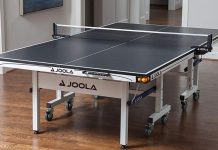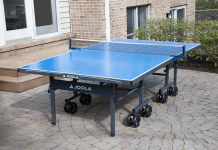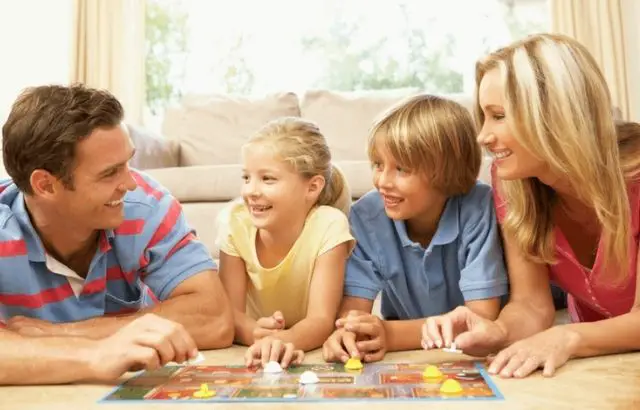Board games for kids are a family activity that stimulates your child’s imagination. DIY board games involve children’s research, reading, creative thinking, logical thinking, and experiments. In addition to the fun of playing together, playing board games is a great way for kids to learn social behaviors.
Almost unconsciously, they prefer things like taking turns, concentrating on games, and following the board games’ ideas. Why not invite your kids to design and create a board game? It’s a fun activity, and it appeals to all age groups. Most kids enjoy board games, but there’s something special about making one for kids.
You have to let your kids make a DIY board game. It’s a great indoor math activity they can play while building! It’s an enjoyable family game, and it’s free!
Table of Contents
How to Make a Board Game for Kids
When you go through the steps, please take a step back and follow your children’s lead. Ask questions all the way and provide help as needed, but provide space for your children’s imagination to fly.
- Choose a theme
- Build your board
- Create your game pieces
- Add some rewards and challenges to suit your theme.
- Decide how you want the pieces to move.
- Determine the basic rules.
- Play the game.
Choose a theme
Decide the theme for the game. Here are some tips to get you started.
- Adventure (jungle adventure, pirate adventure, space, explorer, deep-sea)
- Family life and activities
- A movie
- A book (Stories of Narnia, Harry Potter, Fancy Nancy, Pete the Cat.)
- Town landmarks in your city
Take a look at the board games you already have for inspiration. Can you go with any of them?
Build your board
There are two options
- Sketch your board game on cardboard or Bristol board
- Print the board template.
Create your game pieces
Make the game piece out of the little things you find around the house like Lego men, small plastic figures/animals, buttons, coins, shells, or rocks.
Or make your own. Here are some simple ideas.
Kid board games have instructions for creating an individual part of the game. Adjust the card to draw on some card stock (or by gluing a picture on it).
Add some rewards and challenges to suit your theme.
Print them directly on the board or make game cards. Indicator cards sever in half are presently the right size for game cards. For example
- The dog eats your homework. Go back to 2 spaces.
- You won the Canadian Idol!! Earn 2 tokens.
- Meet a monkey who steals your watch! Go back five places.
- Hold your tongue and say the alphabet.
- Patricia, you forgot your lunch. Lose the turn.
- Make a funny face.
- Encourage creativity and humor!
Decide how you want the pieces to move.
Would you draw a card, use a spinner, or throw a dice? Would you use a combination of these methods? You can also create a special aspect or spinner.
Determine the basic rules.
This will probably change with you playing the game, but it’s good to keep the starting point.
Play the game.
You have to make adjustments and tweak the rules as you go along. The main thing is fun!
Basic Requirements to Make a Board Game at Home
- A handful of the board game to use for inspiration
- “What makes a game?” Printable
- Paper or poster board
- C, pencils, markers, etc.
- Various craft supplies (stickers, clay, pipe cleaners, etc. use whatever you have)
- What makes a game fun?
Gather a stack of your family game (skip card games and dice games for this activity). Simple games work best. They include:
- Candy Land
- A Cooperative Whodunit Game
- The Game of Life
- Clue
- Enchanted Forest
- Monopoly Jr
- Chutes and Ladders
- Busytown: Eye found!
Look at the games you’ve collected and ask, “What makes a game?”
What are the themes or settings in games?
- House / Mansion (Clue)
- Town (Basitown, Life)
- Trains (ticket to ride)
- Forest / Fairy Tales (Enchanted Forest)
How can you win different games?
- Get the Most Points (Keaton Finishes, Ride Tickets)
- Solve the mystery (Clue)
- Reach the First End (Candyland, Chutes, and Stairs)
- Make the Most Money (Monopoly)
What’s in all board games?
- Rules
- Players
- Space
- Goal
- A board
What’s in some board games?
- Cards
- Points
- Money
- Dice
- Rick and Morty board games.
- Spin a spinner
- Marker
- Plan your own board game
- War Board games
Once you’ve explored the various games’ features, and discussed what makes the game fun to play, encourage your child to create their own game!
To help your child think about all the things they need to decide for their game, use the “Design Your Own Game” printable plan:
- Theme
- Title
- Goal
- Players
- Rules
- Content
Why Children Should Play Board Games
Board games are great for mental health.
A fun board game session with your kids is like a booster dose of endorphin-happy hormones. These hormones significantly affect our mental well-being by lowering our anxiety and stress levels. It is also very easy to iron the pines and squabbles that are a very part of family life. You can get the family feud board games to play with your kids.

Increases social skills
Besides brain benefits, playing board games teaches children social skills, for the shy and young children. Board games are an easy way to teach children about sharing, patience, waiting for turns, communication, and interpersonal skills. Examples best teach these soft skills, and what is better than demonstrating them in a playful board game session.

The family that plays together lives together
Yes! It is important to play with your children. It’s a subtle yet powerful way to tell them you care and wait for their company. Playing board games for kids is a grand way of spending a little time with the family and building a healthy parent-child bond.
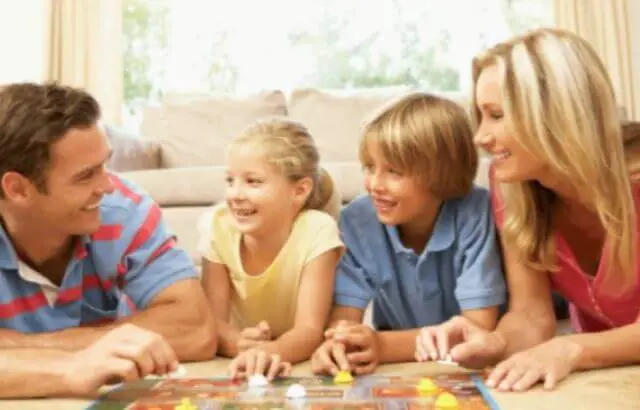
Board Games Supporting Emotional Intelligence
Let’s face it! Failure is a great teacher, and losing is always a part of life in one way or another. A board game is a great way for your child to win with humility and a relaxed performance. Losing pride teaches children to be calm and to take charge of their emotions. This builds resilience, self-control, and good executive skills.
Winning requires strategy, self-analysis, and goal setting. All of these skills are easily nurtured while playing board games.
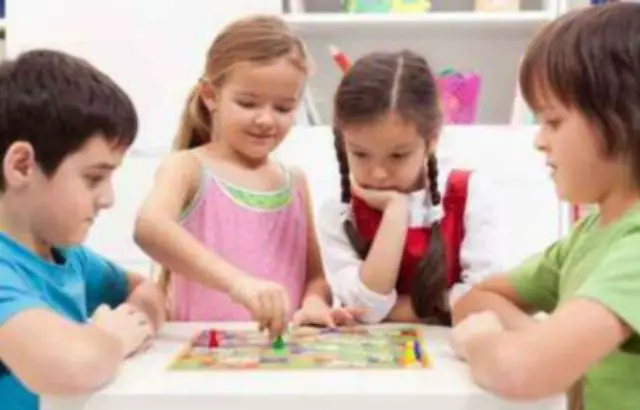
Playing board games fires your brain
Board games are excellent for beginners. Rational thinking, spatial reasoning, and critical thinking are much easier to create than trying to preach through board games. The prefrontal cortex, the brain areas in charge of memory functioning, is greatly stimulated when playing board games. You are building family game concentration, attention, and cognitive skills!
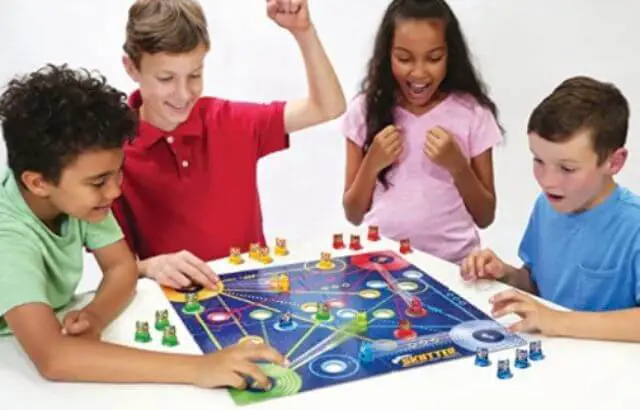
An excellent way to unplug
Board games can serve as an excellent tool for balancing your family’s digital and real life. They can help you stimulate real family connections. And you’ll be amazed at how easy it is for your kids to put on their devices when you provide (better schedule) time for board games every day.
There are many reasons to play board games with children. Board games are a cheap way to have fun and build good family relationships. It’s a total win-win for both parents and kids!
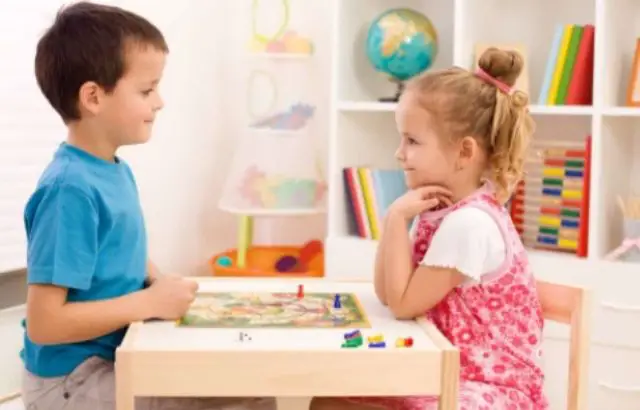
Frequently Asked Questions
How do you make a digital board game?
- Customize player markers and use pictures instead of default markers.
- Include pictures in each game square.
- Use three dice in your game.
- Make sure each square on the board gives a different direction or prompt.
- Make sure your card deck includes videos, pictures, links, and graphs.
How can I make a game without coding for free?
How to make a game without coding: Major game engines that do not require programming knowledge
The following game engines allow developers to implement complex game coding for free. Anyone who wants to use their computer coding without coding knowledge can easily code their game.
- Gamemaker Studio. Gamemaker is possibly the most acceptable game creation device. It has a drag and drops options and other simple features that allow anyone who has never programmed in their life to create a game.
- Adventure Game Studio. Adventure Game Studio is very easy to use as game making software. This Adventure Game Studio editor used Windows-based IDE that allows you to do anything quick and easy, including writing game scripts and importing graphics.
- Unity. Unity supports the incredible library of platforms and also comes with its built-in IDE. It is used to create both 3D and 2D games and promotes a huge store of assets and resources.
- RPG Maker. RPG Maker possesses all you require from a game creation device: a user-friendly interface, lots of tilesets to use, and systems that take care of all the numerical elements that come with an RPG game.
- Game salad. Game Salad allows you to create and publish games on many platforms, and its intuitive drag-and-drop interface is easy for anyone to use.
Are board games profitable?
Yes, they are. It is feasible to make money designing and sell board games, but you need to do it on a large scale to make a meaningful profit.
Conclusion
Do your children love to play board games? Try letting them design one! This creative activity will help children analyze the games they know and learn how to make their own board games.

Veronica is a Green Bay-based freelance writer and editor with extensive experience with board games. When not busy scribbling her thoughts, you might find her in her garden, hiking out in the woods, or exploring new food joints.
Veronica is a die-hard board game and chess hobbyist by night. She likes to try out new games and is always on the lookout to recruit new players for her game night (so beware!). When not playing board games or throwing darts, she is usually busy painting miniatures (or doing other nerdy stuff).
She is the CEO & Content Writer of Indoor Games Zone. She shares her expertise from years of playing chess, board games, and darts.
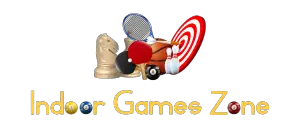
![Stiga XTR Pro Review | 1,559+ Global Ratings (In-Depth Guide) [year] Stiga XTR Pro Review](https://indoorgameszone.com/wp-content/uploads/2021/08/Stiga-XTR-Pro-Review-218x150.jpg)

